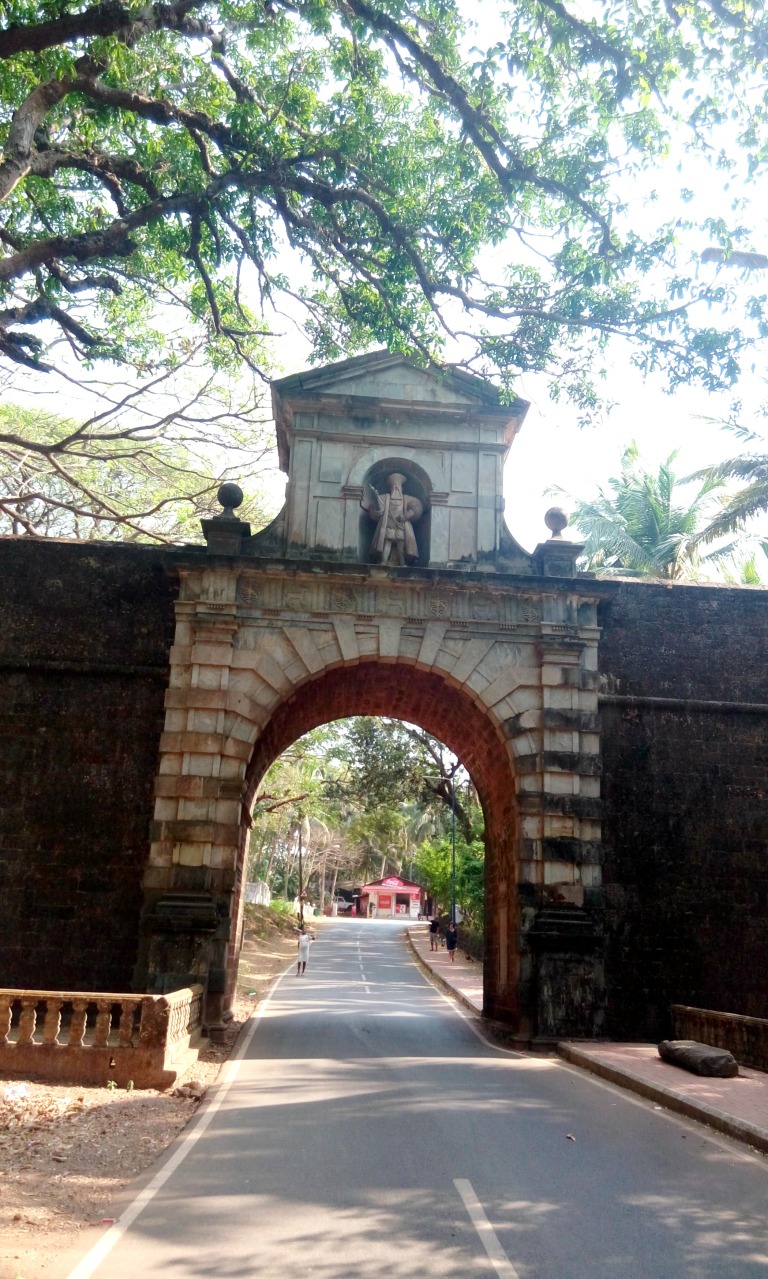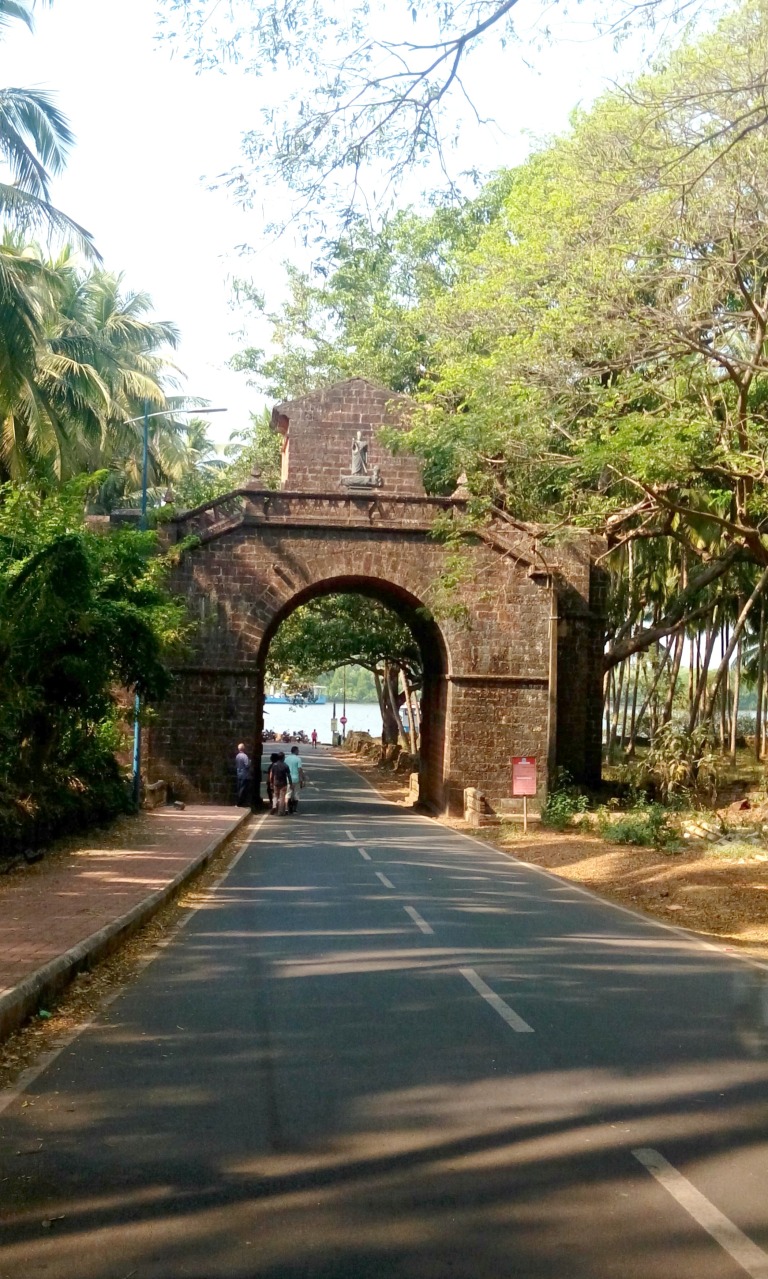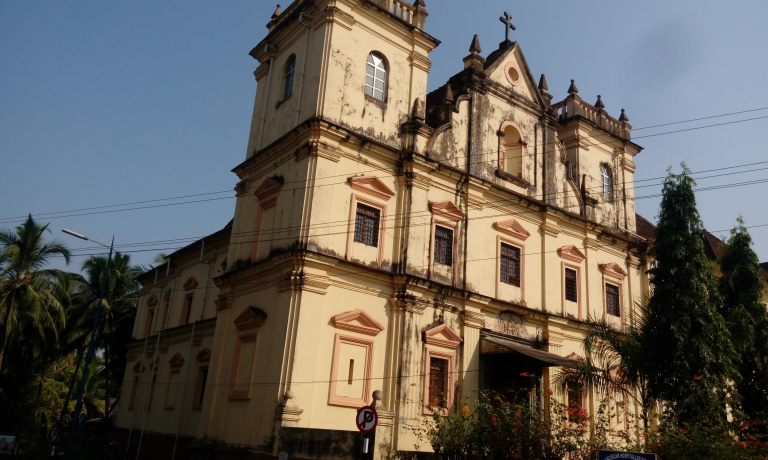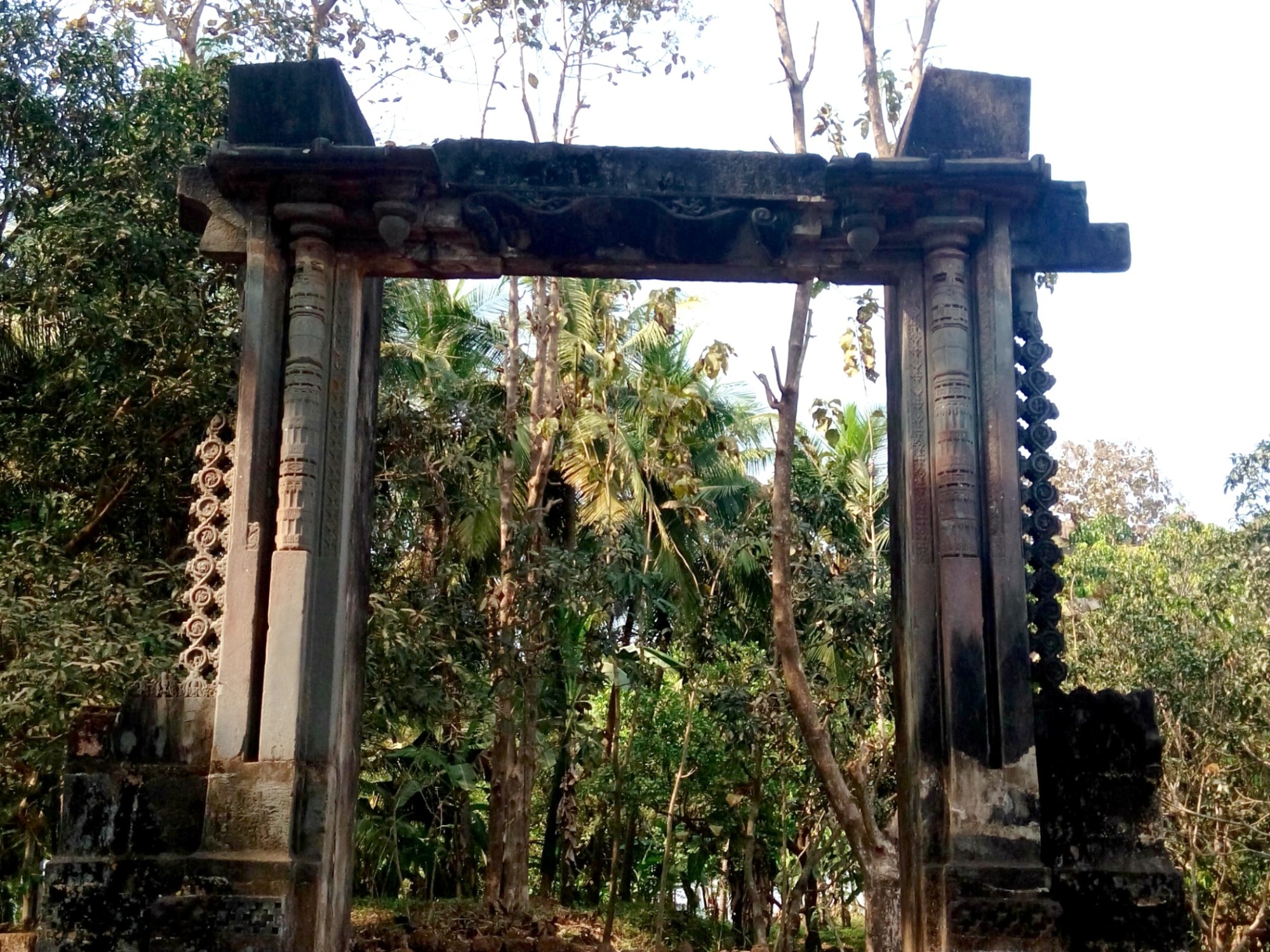As you walk towards St Cajetan you almost miss a little pathway that leads off to the left. It is half hidden by bushes and you can barely see ruined doorway at some distance. It is all that is left of the palace of Adil Shah, the erstwhile ruler of the Goa region before the Portuguese came. Later it became the residence of the Portuguese governors. After an epidemic in the 18th century the palace was demolished and these two pillars are all that remain of the mighty palace.


A little distance away is the Viceroy’s Arch. It was erected by Vasco Da Gama’s grandson to commemorate his achievements. The road under the arch leads to the Mandovi river towards what would once have been a busy city wharf. The face of the arch towards the river bears a statue of Vasco da Gama. Anyone approaching from the river will first get a glimpse his statue.

And on the side facing the town is the statue of an European woman wielding a sword over a prostate Indian, a symbol of the Portuguese domination over the Indians. It is said that the arch used to have another storey with the statue of St Catherine.


Walk from the Arch towards the Basilica of Bom Jesus and further ahead lies the ruins of The Church of St Augustine. Built in 1602 by Augustine monks on the Holy Hill the church had beautiful chapels and four altars.As you walk among the ruins you can see what an extensive construction it was. It was recognised as one of the three great Augustine churches and comparable to the ones in Spain and Lisbon. After the Portuguese occupation of Goa many religious orders were evicted and the church was abandoned in 1835. The main body of the church fell and only the facade remained. The St Augustine tower is all that remains of the Church, once one of the largest buildings in Goa.


At the fork road that leads to St Augustine is the Convent and Church of St John of God. A very simple building it was earlier used as a hospital for the poor and now houses an Old Age Home.

And last but not the least of the famous churches in Panaji is the Church of Our Lady of Immaculate Conception. It was one of the first churches to be built in Goa around 1541. Back then Panaji was just a small fishing village and Portuguese sailors would first visit the Church to offer thanks for a safe crossing at sea.The facade is often compared to a fancy wedding cake because of its criss cross stairs that lead up to the church. At night the church is beautifully lit and is a treat to behold.



Very informative.Takes us down history lane and recreates history vividly.Amply supported by beautiful pictures.Makes us aware of our diverse and rich heritage.Kudos !!
LikeLike